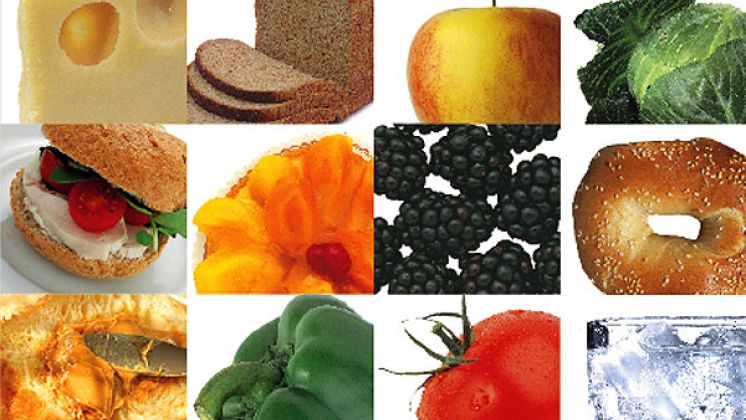Abs
Eating foods that compliment your abs programme will help to bring your six-pack out of hiding.

1 When you get up
Start the day with a breakfast based around complex carbs. These are the carbohydrates that release their energy slowly, so you will still feel up for it when it’s time to do your workout. Also, complex carbs of the low glycaemic index variety help to regulate your blood-sugar levels, which will prevent hunger pangs and stop your body storing fat reserves unnecessarily.
Good foods to get your day off to an ideal start are wholegrain breakfast cereals, porridge, wholemeal toast and fruit.
2 Morning snacks
Snacking during the day is fine as long as you side-step the biscuit barrel and opt for healthier snacks, such as fruit, plain nuts, yoghurts or cottage cheese. These are fairly low in calories and will help to keep your energy topped up, as well as providing some valuable protein for use during your workout.
3 Lunchtime
For the average British worker, lunch consists of a big fat sarnie, a packet of crisps and a can of Coke. What you get is a pile of sugar and saturated fat, and that’s not good for your six-pack. Try swapping white bread for wholemeal bread, using mustard instead of mayonnaise and packing your sandwich with salad rather than extra cheese. Instead of crisps, snack on crunchy veg sticks, and avoid fizzy drinks altogether as they are just empty calories. Go for water or a nice cup of tea instead.
4 Afternoon snack (one hour before workout)
You should aim to take on some protein and carbs in readiness for your workout. A banana plus some peanut butter would do the trick, or a couple of crackers with low-fat cheese.
5 20 minutes before your workout
An energy drink will help to fuel your exertions in the gym without weighing heavily on your stomach. Look for isotonic sports drinks that will give your body the right blend of sugars and salts to keep your performance levels high.
6 During your workout
Water. There’s nothing more refreshing when you’re parched, and it will keep you properly hydrated for any session shorter than an hour. Make sure you that you take regular sips from a water bottle throughout your workout and don’t wait till you’re gasping before taking a huge glug, or you will already be dehydrated and your performance will suffer as a result.
7 Straight after your workout
You need to get some fast-acting carbs inside you to replenish lost glycogen stores, along with fast-acting protein to fuel muscle growth, and antioxidants to help your body recover properly. Whey-based sports nutrition drinks can come in handy here – always use a reputable brand and read the label – or you could have a bagel with cream cheese and some egg salad.
Get the Coach Newsletter
Sign up for workout ideas, training advice, reviews of the latest gear and more.
8 Evening meal
This is the easiest time to pile on the calories, so try to keep your portions small, avoid creamy sauces or huge piles of starchy carbs such as pasta and potatoes, and stock up on vegetables. If you cook your own meals from scratch using fresh ingredients you’ll have a far better chance of avoiding unwanted calories than if you rely on takeaways and ready meals.
Also, wait for 20 minutes after your meal before deciding on pudding. It takes that long for your brain to register that your stomach is full, and by then you might not feel hungry any more.
9 Evening drinks
Do you like a couple of beers in front of the TV? Switch to wine and you’ll cut out a whole load of calories plus you’ll get some useful body-repairing antioxidants. Of course, this will only work if you don’t swig down two bottles of wine a night.
10 Before bed
An extra little bit of slow-acting protein will help your muscles to grow while you sleep. It doesn’t have to be much. Have a small pot of cottage cheese before you hit the sack.
Top tip
Aim to take on some protein and carbs in readiness for your workout. A banana plus peanut butter would do the trick.
Coach is a health and fitness title. This byline is used for posting sponsored content, book extracts and the like. It is also used as a placeholder for articles published a long time ago when the original author is unclear. You can find out more about this publication and find the contact details of the editorial team on the About Us page.

